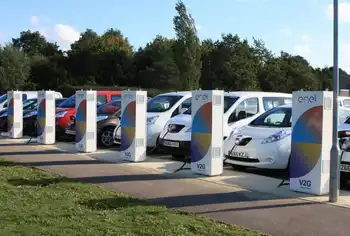OEB announces electricity price plan
By Canada NewsWire
CSA Z463 Electrical Maintenance
Our customized live online or in‑person group training can be delivered to your staff at your location.

- Live Online
- 6 hours Instructor-led
- Group Training Available
Upon adoption of a Government regulation, the new prices will take effect on April 1 of this year.
The Minister of Energy asked the Board to develop an electricity price plan to make sure the prices consumers pay for electricity better reflect the price paid to generators. Beginning April 1, the price of electricity for eligible consumers will be 5.0 cents per kilowatt hour (kWh) for the first 750 kWh they use each month, and 5.8 cents per kWh for electricity used per month over this amount. This will be reflected on the “Electricity� line on consumers’ bills.
Starting November 1, 2005, that price threshold – the amount of electricity that is charged at the lower price – will change twice a year for residential consumers. The price threshold will be 1,000 kWh per month during a winter season (November 1st to April 30th) and 600 kWh during a summer season (May 1st to October 31st). This means consumers will be able to use more electricity at a lower price in the winter when many people need more electricity for light, indoor activities and heating. For non-residential consumers who are eligible for the new price plan, the price threshold will remain at 750 kWh for the entire year.
“This new plan is designed to be stable and predictable and to help consumers manage their electricity costs while, at the same time, making sure the prices they pay better reflect the prices paid to generators, " said OEB Chair Howard Wetston.
Eligibility for the new electricity price plan is determined by the Government through regulation. The Minister of Energy has indicated that eligible consumers include those in the residential class, consumers that use less than 250,000 kilowatt hours per year and consumers in the municipal, university, school and hospital sectors. These consumers will be eligible for the price plan until April 2008, at which time eligibility will be limited to residential consumers and consumers that are classified as “general service less than 50 kilowatt demand� by their utility.
The new price plan is a blend of the regulated prices for Ontario Power Generation’s (OPG) nuclear and baseload hydro facilities announced by the Ontario Government on February 23rd, existing contract prices for supply from non-utility generators and the Board’s forecast of electricity prices in the spot market over the next 12 months. In subsequent periods of the price plan, any additional new supply delivered under contract will be included in the price calculation.
The Government also recently announced that certain generation facilities owned by Ontario Power Generation will be subject to a revenue limit for 13 months. The difference between the revenue limit and the actual market price has been forecasted by the Board and that difference has been rolled into prices for this year. The Ontario Power Authority will track the difference between the amount consumers have paid for electricity and the amount that has been paid to generators. Consumers who leave the price plan will be required to settle their share of the balance of that account. They will be reimbursed if consumers have been paying more for electricity than was paid to generators, or will need to pay their utility if consumers have been paying less than was paid to generators.
The prices established by the Board today are intended to stay the same for one year. At the end of that year, and every six months after that, the prices consumers pay for electricity may change based on an updated Board forecast and any difference in the amount consumers paid for electricity and the amount paid to generators.











